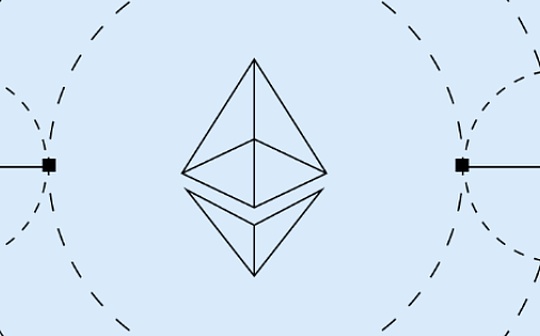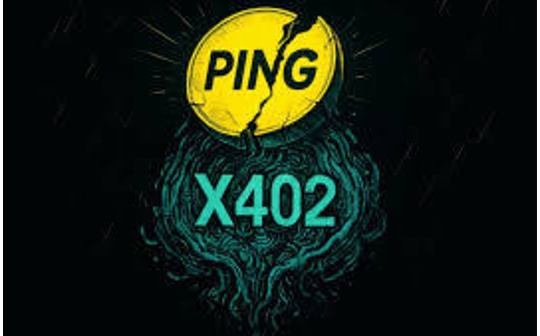
Galaxy: The current status of Ethereum Blob and the Blob market in the post-Pectra era
Author: Zack Pokorny, Galaxy research analyst; compiled by AIMan@Bitchain Vision
Preface
On May 7, 2025, Ethereum Pectra was upgraded to be launched on the main network.In the implemented Ethereum Improvement Proposal (EIP), EIP-7691 increases the target number of blobs and the maximum number of blobs per block.In last year’s Dencun upgrade, EIP-4844 (formerly Danksharding) introduced Blobs to provide Rollup with a dedicated data publishing space.Since Dencun went live, the Ethereum network has maintained the target number and maximum number of 3 blobs per block; calculated at the data size of 128kb per blob, which means that the data capacity transmitted through the blobs is about 5.5GB per day.After the Pectra upgrade, the target number of blobs and maximum number of blobs per block increased to 6 and 9 respectively, and the blob data capacity increased to about 8.15GB per day.This change has had an impact on the blob market, rollups, and Ethereum validators, and its increase reduces the scarcity of the number of fixed blob spaces that rollups compete for and increases the network’s data availability (DA) capacity through blobs.The following discusses the impact of the Pectra upgrade on the Ethereum blob parameter changes on the blob market, rollup and its users, Ethereum validators, and ETH supply.
Key Points
-
Within five full days after Pectra went live, rollup’s daily blobs increased from about 21,200 to 25,600.Despite the increase, the average number of blobs per block is still 33% lower than the new target (6 blobs per block).
-
Blobs are almost free for the first time since mid-April 2025, as the actual number of blobs per block is much lower than the updated target rate.Since Pectra went online, less than one thousandth of a cent paid per day through Rollup, and the total cost of a blob object is only four thousandth of a cent.This significantly reduces the amount of ETH consumed to purchase and publish Rollup data space on Ethereum through Blobs.
-
Nodes must retain rollup blob data for at least 18 days before they can be removed from their machines.The increase in the number of blobs purchased daily has led to the amount of data that the consensus layer node must maintain between prunes to a new high of 44.6GB.
-
The reduction in Blob costs improves Rollup’s relative and absolute profit margins, and Base is the biggest beneficiary in terms of net income after deducting on-chain costs.Meanwhile, transaction costs for some top Rollups have remained the same or even slightly higher since Pectra went live.
-
All data used is taken from Galaxy Research’s public dashboard about the Ethereum blob market and its impact on Rollup.
Blob Market
Since Pectra went live on May 7, 2025, the rollup platform has increased 20.8% daily blobs from before the upgrade.Within 60 days before the Pectra upgrade, the rollup platform purchased 21,200 blobs per day.Within five days of upgrade, they purchased an average of 25,600 blobs per day.This means that the data capacity purchased daily before the upgrade was 2.7 GB, and now it is 3.3 GB.

Despite the increase in the number of blobs purchased, the average daily usage of blobs per block per day since Pectra went live is only two-thirds of the new target blob limit.Therefore, although the average number of blobs per block remains at the target rate until Pectra increases the number of blobs, the demand for rollup has not yet reached the level of continuing to reach the new target rate.

So, since only two-thirds of the blob target is used per block, blobs are actually free.This is the first time since mid-April 2025 that blobs are so cheap.Since Pectra went live, the median cost per blob object is only $0.000000035 (nine zeros).This resulted in rollups paying no more than $0.0000092 (five zeros) per day since Pectra activation; for a full five days after Pectra activation, only $0.0000395 of blob object fees were paid in total.You read that right, since Pectra went online, rollups paid less than one thousandth of a cent a day, while the total cost of blob objects was four thousandth of a cent.Note that this number does not include the type 3 transaction cost required to execute a blob on the chain, but only the cost of the blob object itself.
This means rollups pays blob object fees to Ethereum by nearly 100%—an average of $16,250 in blob fees per day for the 60 days before Pectra rollups, totaling $1.095 million.

Data capacity usage and its impact on Ethereum nodes
In the post-Pectra era, more of the total daily data capacity Ethereum provides through Blob has not been purchased.So, while Rollup is buying more blobs from the network to gain more data space, the purchase share of the total daily blob data capacity has been relatively small since Pectra went live.Once the Rollup requirement reaches the updated target rate, the Blob market will run more efficiently from a capacity point of view, as the new target rate is only 33% lower than the maximum, compared to 50% under the old parameters.
The updated blob capacity is 9 blobs per block, the number of Ethereum blocks per day is about 7,100, and Ethereum can sell up to 8.17GB of blob space per day, and 5.45GB can be sold according to the target blob number per block; this value will fluctuate with the actual daily number of blocks.However, only 3.3GB of data space has been sold at present—just 40% of the maximum available data capacity per day and only 61% of the target number.By comparison, when the target blob count (3 blobs per block) was reached one month before the implementation of the Pectra program, the average daily sales were 50% of the total capacity, which was 99% of the target number.
Each Blob object can hold up to 128 kilobytes (KB).Rollup data does not need to occupy all 128KB of each blob (for example, 100KB per blob can be used if necessary), but the capacity of a single blob cannot exceed the 128KB limit.The difference between the purchased blob capacity (the green line in the chart) and the used blob capacity (the red line in the chart) highlights how many blob objects have a cap of 128KB per day filled with rollup data.After upgrading to Pectra, the average occupancy of Blobs is 86%, compared to 82% within 60 days before the upgrade.

The increase in the amount of blob data purchased daily causes consensus layer nodes to have more Rollup data on their machines.The node must keep the Rollup Blob data for at least 18 days before it can be removed (trimmed) from the machine.Before Pectra, this meant that the node had to carry 40GB to 44GB of data continuously.In the days after Pectra, the number has been climbing as Rollup buys more blobs, and the number may continue to increase as Rollup saturates new blob parameters.As of May 12, 2025, unpruned Rollup data held by consensus layer nodes is estimated to reach an all-time high of 44.6GB.If the demand for blobs is maintained at the current level, consensus layer nodes will have to carry about 60GB of Rollup data; at the target rate, they will have to carry about 95GB to 100GB of data.

Rollup Cost and ETH Burning
Since Pectra went live, Rollups has paid an average of $11,015 in blob-related fees per day, including transaction costs for Blob objects and Type-3 execution layers.By comparison, an average of $20,660 per day was paid in the 60 days before the update, meaning a 51% drop in total daily cost of buying and executing a blob.

The sharp rise in Ethereum Layer 1 fees has led to high costs for Rollup to pay for Blob activities.Within days after Pectra activation, Ethereum Layer 1’s underlying expenses rose by more than 650% on a week-on-month basis.Without this soar, Rollup will need to execute blobs less and Rollup Blob activity will consume less ETH.

Since Pectra is activated, the amount of ETH consumed by publishing Rollup data through Blobs (including ETH used to purchase blobs and execute on Ethereum Layer 1 through Type 3 transactions) has dropped significantly.In the 60 days before the upgrade, an average of 11.22 ETH was consumed per day, of which the execution layer cost only accounted for 37.1% of the total daily consumption.Since Pectra is activated, only 3.26 ETH is consumed per day (down 71%), and 99.99% of the total consumption comes from the underlying fees of type 3 execution layer transactions.

Impact on L2
After Pectra went online, both the relative profit margin and absolute profit margin of Rollup after deducting on-chain costs were significantly improved.Linea and Base have the highest percentage of profit margins after deducting on-chain costs in the observed Rollup, calculated using the seven-day moving average, at 98.86% and 98.54%, respectively.Blast’s profit percentage gains most significantly after deducting on-chain costs, with Pectra rising from a high of 50% to a low of 60% in the days before it went live, and now it has exceeded 80%.

After Pectra went online, on-chain costs increased, but the net benefits brought by Rollup fell.This is mainly due to the combined effect of lower data costs (as mentioned above) and the rising costs of activities and transactions.Both the revenue and net profit after deducting on-chain costs were observed on each Rollup platform slightly doubled, but in terms of absolute value, Base was the biggest beneficiary in recent times.Base’s revenue was $1.22 million, and net profit after deducting on-chain costs was $1.12 million.

in conclusion
Rollup has not yet taken full advantage of the Ethereum data availability improvement brought by the Pectra upgrade.Therefore, it reduces the cost of DA activities through blobs owes Ethereum every day.The upgrade, at least for now, makes Rollup more financially beneficial to its operations while increasing the number of blobs it uses every day.Pectra’s changes to Ethereum Blob parameters also raise key points about node requirements for storing Blob data.As Ethereum begins to expand its Blob DA, this may have an impact on node operators that have to bear higher Blob data holding requirements.








